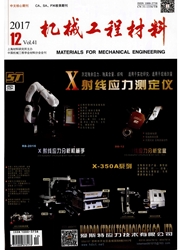

 中文摘要:
中文摘要:
为解决常规盐浴渗碳、等离子渗碳等低温渗碳工艺在提高奥氏体不锈钢硬度的同时会降低其耐蚀性能的问题,在LTCSS工艺的基础上,提出了兼顾硬度和耐腐蚀性能的低温气体渗碳工艺,并对304、316奥氏体不锈钢分别在470,500 ℃进行渗碳处理,研究了渗碳层的组织及耐蚀性能。结果表明:在470 ℃渗碳后,304、316不锈钢获得15~20 μm的耐蚀强化层,硬度提高4~5倍,耐蚀性能未降低;但304不锈钢渗碳层的厚度、硬度及耐蚀性均不如316不锈钢渗碳层的。
 英文摘要:
英文摘要:
For austenitic stainless steel, salt bath carburizing, plasma carburizing and other carburizing processes at low temperature could improve their hardness, but also would reduce their corrosion resistant. In order to solve this problem, on the basis of low temperature colossal supersaturation (LTCSS) process, a kind of gas carburizing process at low temperature was presented, the process could make the stainless steel owning good hardness and corrosion resistance at the same time. Then, 304 and 316 stainless steels were carburized by the technology at 470, 500 ℃, respectively, and the microstructure and properties of the carburized layer were studied. The results show that corrosion resistant strengthened layers with 15--20μm thickness were obtained on 304 and 316 stainless steels surface after they were carburized at 470 ℃, thier hardness increased by 4--5 times without any lowering of corrosion resistance. The thickness, hardness and corrosion resistance of carburized layer of 316 stainless steel were not better than that of 316 stainless steel.
 同期刊论文项目
同期刊论文项目
 同项目期刊论文
同项目期刊论文
 期刊信息
期刊信息
